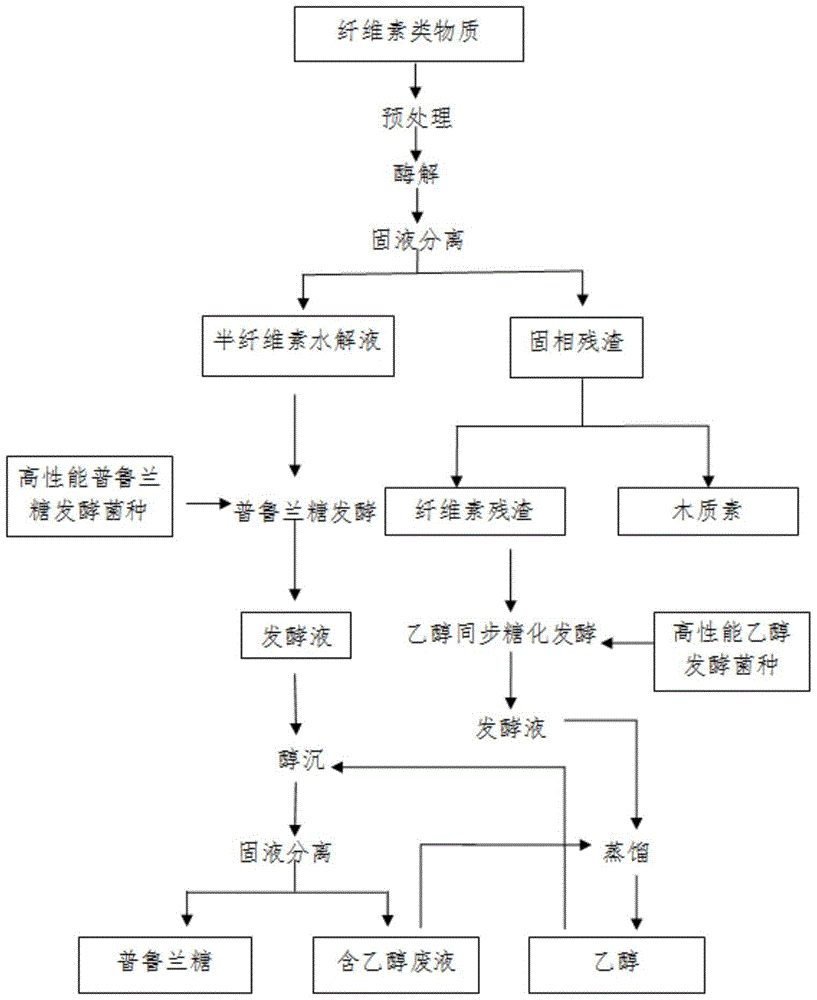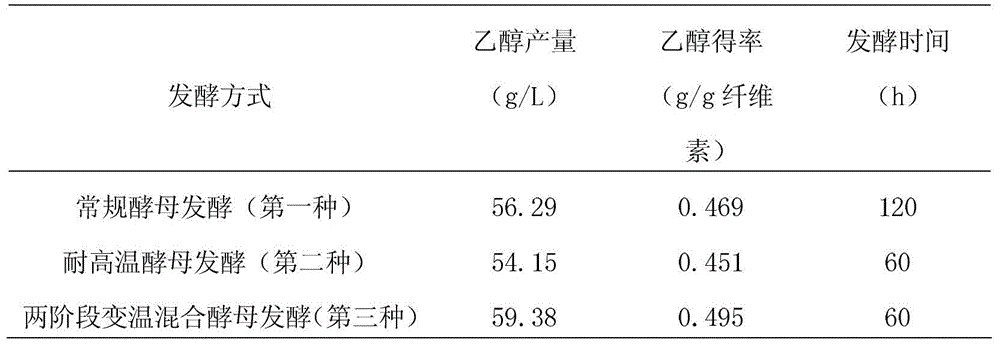A method for co-producing bioethanol and pullulan from lignocellulosic substances
The technology of lignocellulose and pullulan is applied in the field of utilizing lignocellulosic substances to jointly produce bioethanol and pullulan, and can solve the problems of ineffective utilization of xylose and high production cost of pullulan, Achieve the effect of saving resources, reducing production costs, and efficient biotransformation
- Summary
- Abstract
- Description
- Claims
- Application Information
AI Technical Summary
Problems solved by technology
Method used
Image
Examples
preparation example Construction
[0033] The preparation method of the corn flour hydrolyzate is as follows: add 1500 g of corn flour to 4500 mL of tap water at 65-70° C., and leave it for 20 minutes to make the corn flour particles fully absorb water and swell. Add 0.9mL of liquefying enzyme (a-amylase) and liquefy at 85-90°C for 1.5h. After the liquefaction is completed, lower the temperature to 60°C, and add 3 mL of glucoamylase. Saccharification at 55-60°C for 20h. Filter the saccharification solution with a filter cloth to obtain a clear filtrate, which is the corn hydrolyzate, boil it for 10 minutes and cool it for later use.
[0034] (2) Genome rearrangement
[0035] All the cell populations of the mutant library were inoculated into YPD liquid medium, cultured to the logarithmic phase at 30° C. and 180 rpm, and the cells were collected by centrifugation. Wash the bacteria with sterile water, then put the bacteria sludge into the pre-sporulation medium (10g / L KAc, 10g / L yeast powder, 20g / L peptone), ...
Embodiment 1
[0051] Embodiment 1: the preparation of bagasse hemicellulose hydrolyzate
[0052] Remove and crush the impurities in the bagasse to 20-30 mesh, add 0.7% NaOH solution according to the solid-to-liquid ratio of 1:12 (g / mL), pretreat in the reactor at 40°C for 1.5h . At this time, the retention rate of each component of bagasse is respectively: 96.37% of cellulose, 81.02% of hemicellulose, 80.62% of lignin, and 62.93% of xylose yield. Wash the pretreated bagasse until neutral, put the raw materials into the enzymolysis buffer solution with pH 4.5-5.5 according to the solid-to-liquid ratio of 1:18 (g / mL), and add commercially available xylan at 150IU / g raw materials Enzyme, add surfactant RH (rhamnolipid) 0.005%, Tween-800.25%, PEG60000.25%, TritonX-100 (TritonX-100) 0.15%, and enzymolysis at 40 ℃ for 48h . The enzymatic hydrolysis yield of hemicellulose was 98.52%, which was 26.38% higher than that without adding surfactant. In the obtained hemicellulose hydrolyzate, the con...
Embodiment 2
[0053] Example 2: Extraction of lignin in bagasse and preparation of cellulose residue
[0054] After orthogonal optimization of the lignin extraction conditions, the optimal lignin extraction process is obtained as follows: the solid phase residue obtained in Example 1 is added to the lignin extraction mixture, the solid-liquid ratio is 1:15 (g / mL), formic acid : The ratio of ethanol is 9:1 (v / v), the temperature is 90°C, and the reaction time is 2.5h. At this time, the lignin extraction rate was 68.44%, and the lignin yield rate was 49.61%. The cellulose content in the residue after lignin extraction is 68.16%, and the others are 22.22%.
PUM
 Login to View More
Login to View More Abstract
Description
Claims
Application Information
 Login to View More
Login to View More - R&D
- Intellectual Property
- Life Sciences
- Materials
- Tech Scout
- Unparalleled Data Quality
- Higher Quality Content
- 60% Fewer Hallucinations
Browse by: Latest US Patents, China's latest patents, Technical Efficacy Thesaurus, Application Domain, Technology Topic, Popular Technical Reports.
© 2025 PatSnap. All rights reserved.Legal|Privacy policy|Modern Slavery Act Transparency Statement|Sitemap|About US| Contact US: help@patsnap.com



